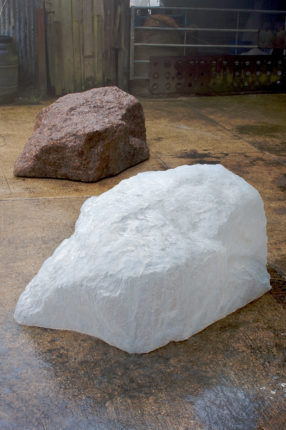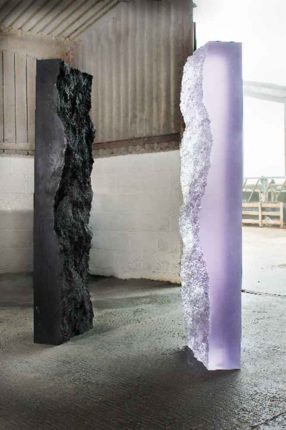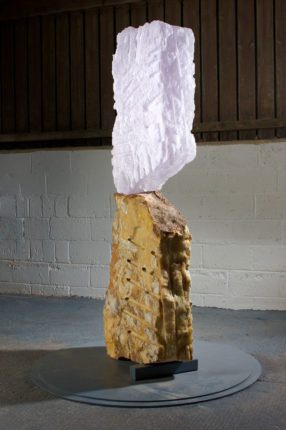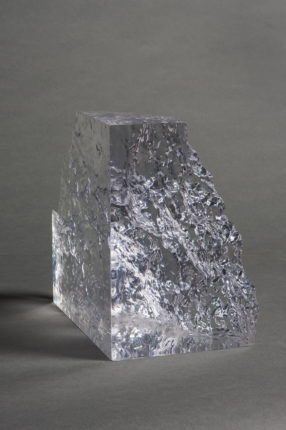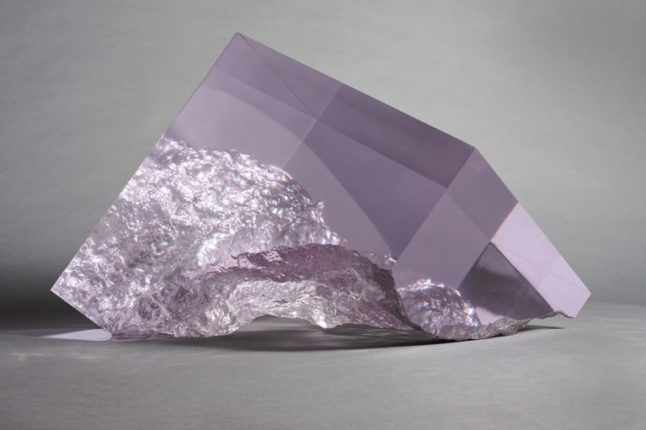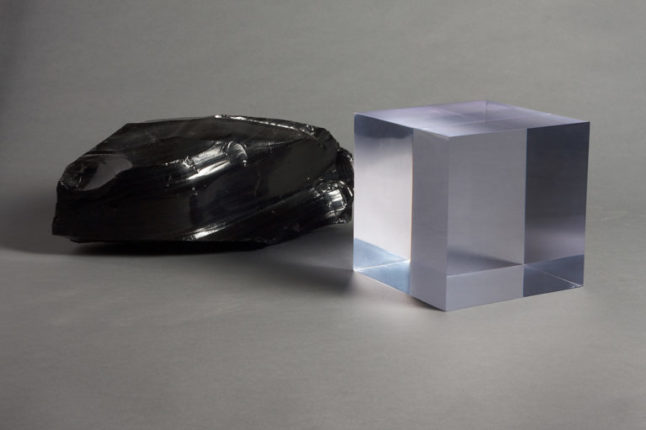Exhibition: 20th June to 26th July 2008
In 2004, Simon Hitchens was commissioned by the Arts Council to make and install a new sculpture in Christopher Wren’s church St Stephen Walbrook, London. The two-piece sculpture In the Presence of Absence took the form of a fractured block of granite placed next to it’s resin cast, which when conjoined would complete a cubic form. In this sacred space, and seen against Henry Moore’s travertine marble altarpiece, Circular Altar (1972) the work immediately became a visual metaphor for human existence in both the earthly and spiritual realms. Once removed however, the work shed it’s obvious religious associations, but retained some equally strong philosophical and metaphysical considerations.
For his solo exhibition at Maddox Arts, Hitchens continues the exploration of these considerations with a series of new works in resin and stone, teasing out the tensions between transparency and opacity in a subtle investigation of the unseen. Whereas earlier in his career, the stone medium would be skilfully worked and sculpted into altered forms, in these new works the artist lays bare the natural rock-face, exposing the unaltered raw surface texture of the stone. Other than the occasional marks left by the crude quarrying techniques, the blocks of onyx, granite and limestone in the gallery remain to the artist, perfect objects that have not been manufactured by the human hand. Through a complicated process of casting and re-casting, a resin imprint is then created which perfectly echoes the solid rock from which it was formed. The beautiful transparent form thus becomes an intriguing visual negative to the stone’s positive and the two objects are intertwined both by their exact similarity and difference.
As the artist explains: The stone can be seen as a metaphor for all that is physical and real, man kind. The resin can be seen as a metaphor to the metaphysical. Clearly the two elements belong together, are moulded by each other’s presence and yet are parted. Questions arise in the viewer’s mind not only because of the contrasts and similarities of the slabs themselves but also on account of the way they are positioned – are we looking at one, albeit divided, entity, or are there two individuals before us? Is this a coming together of a drifting apart? The exact fit of the two surfaces, if contact were made, suggests the possibility of a relationship that was once intimate and that could, perhaps, be so again.
